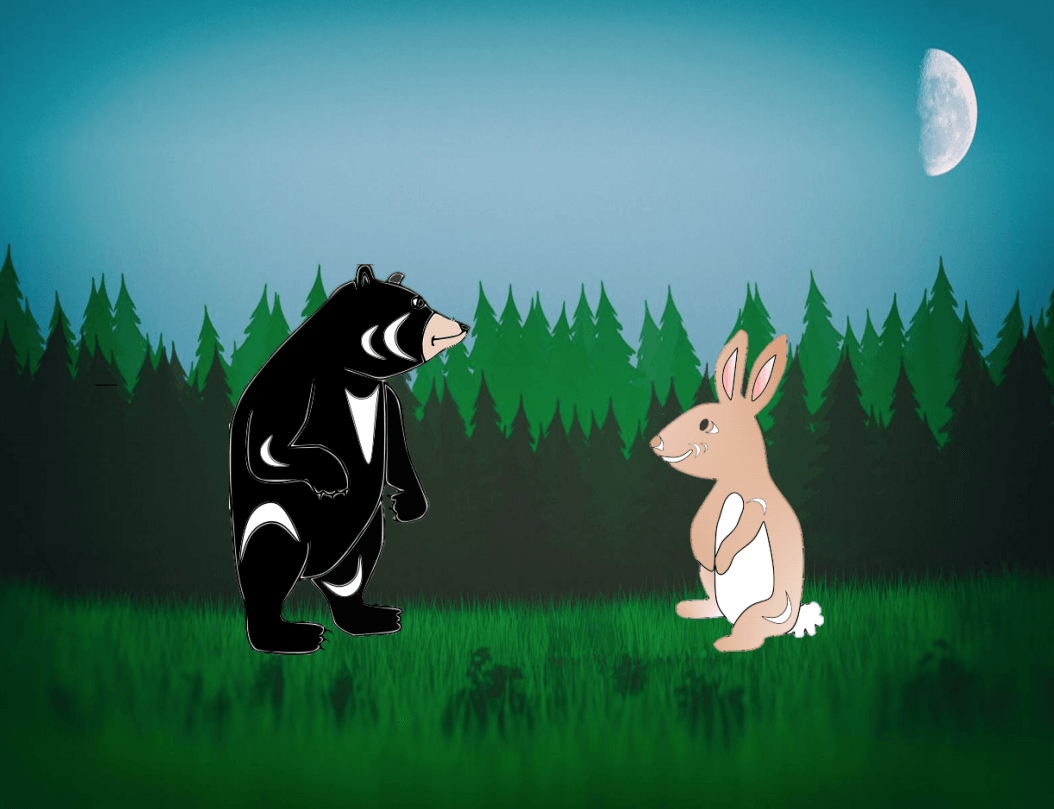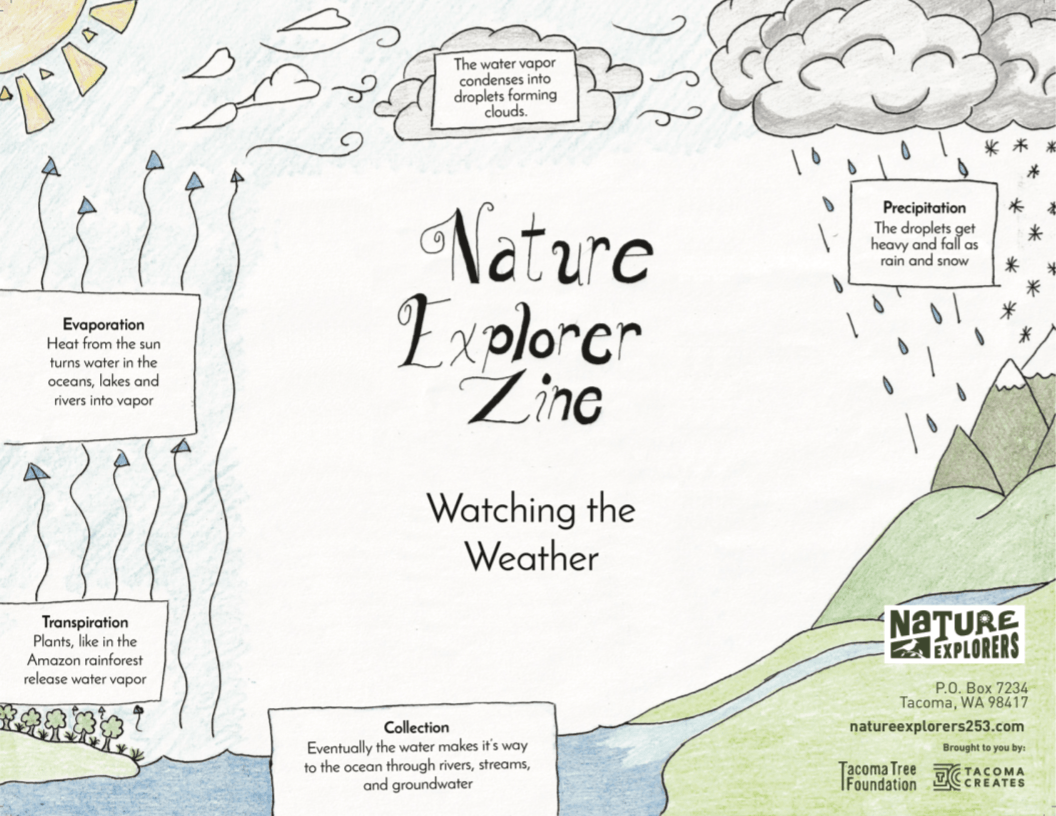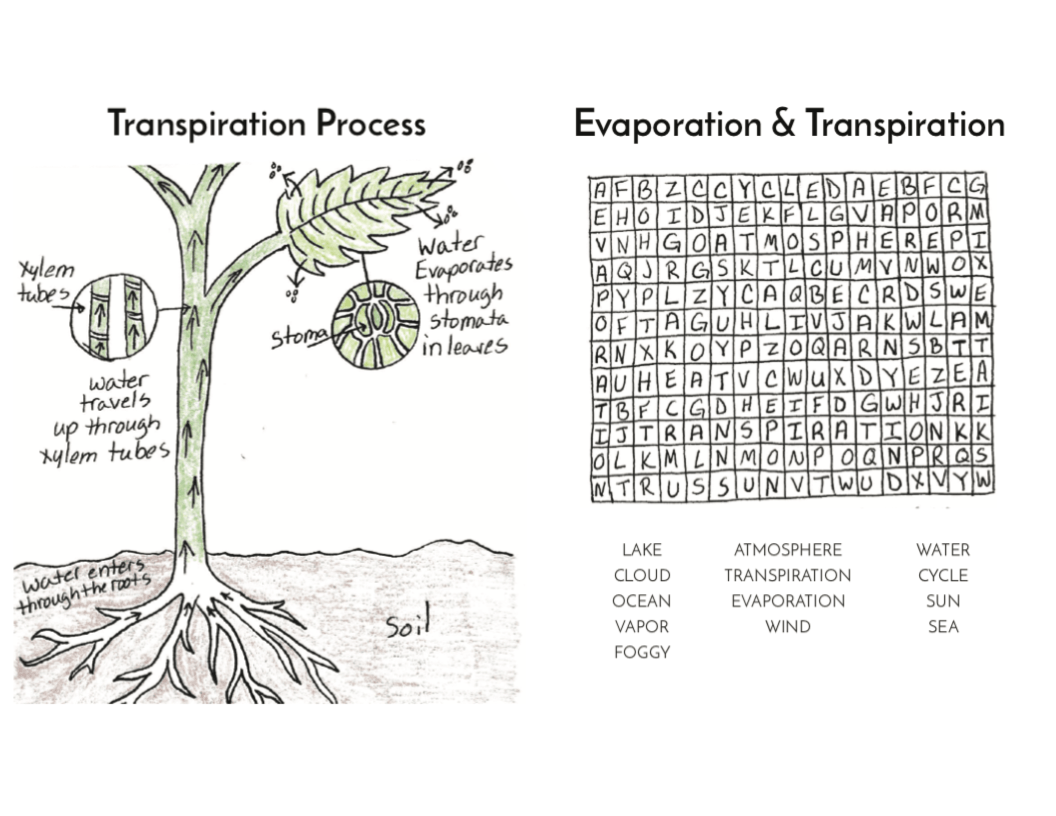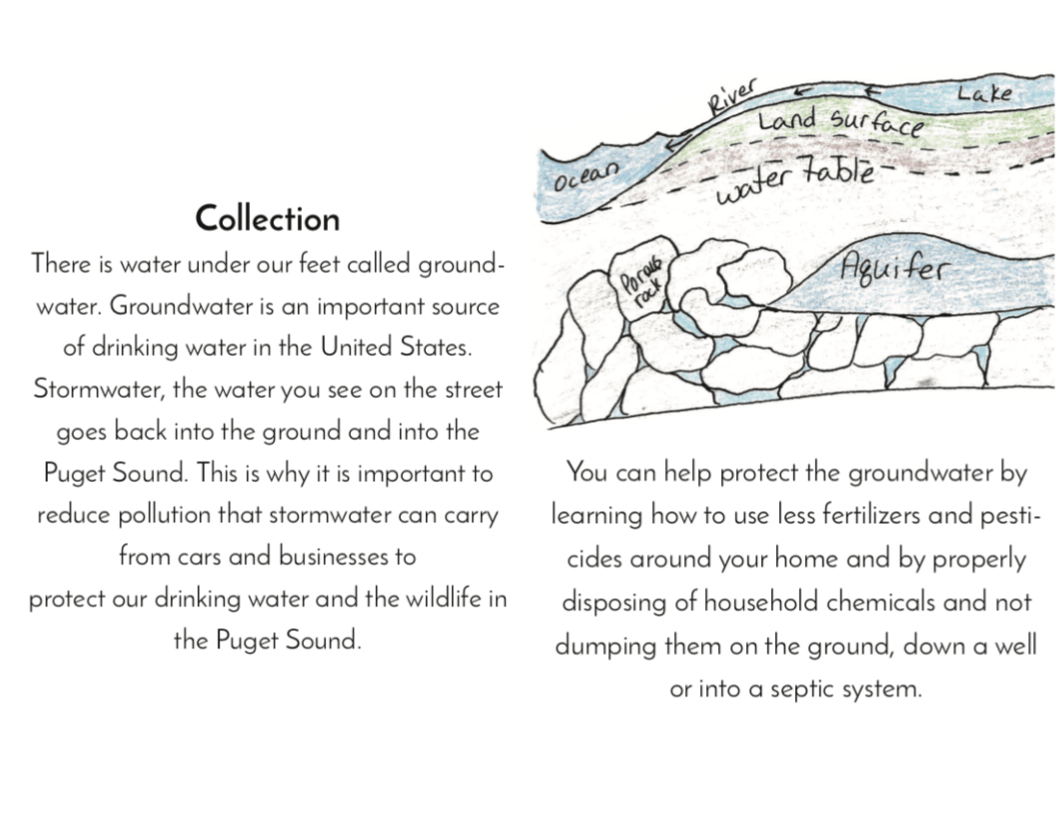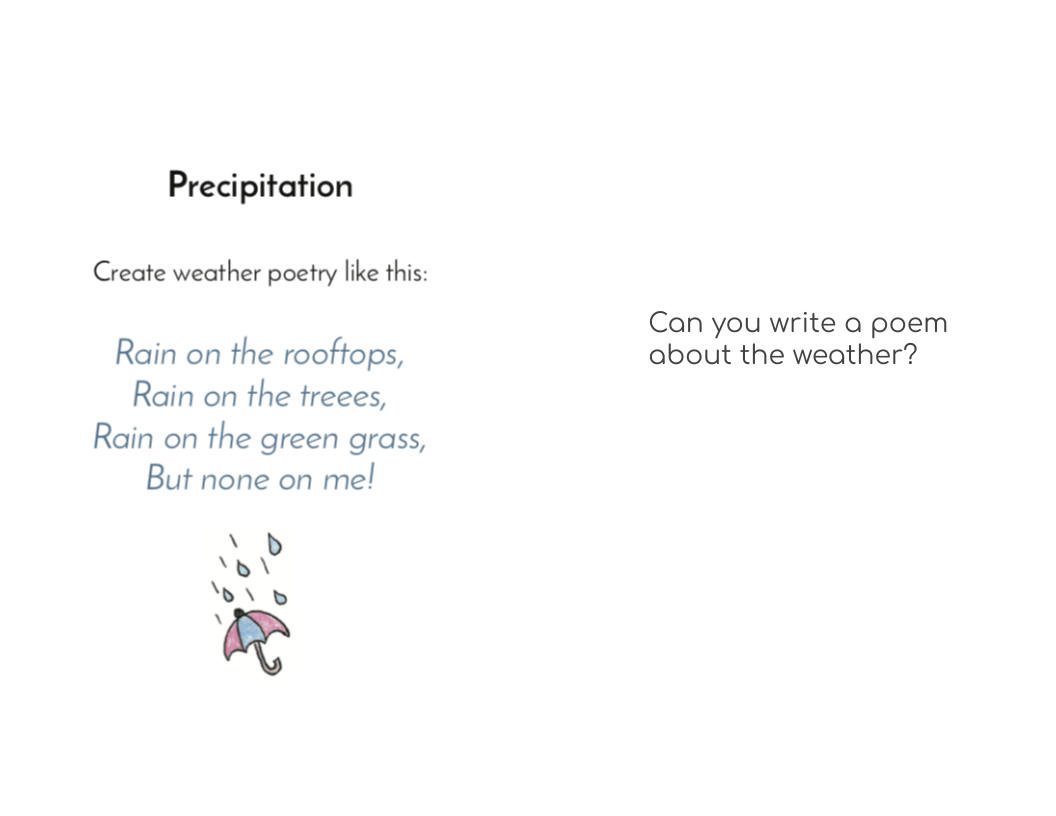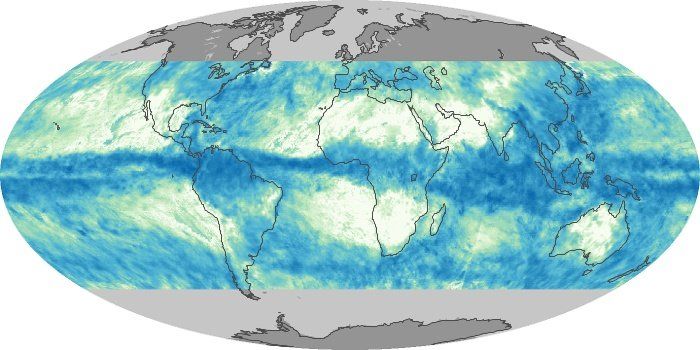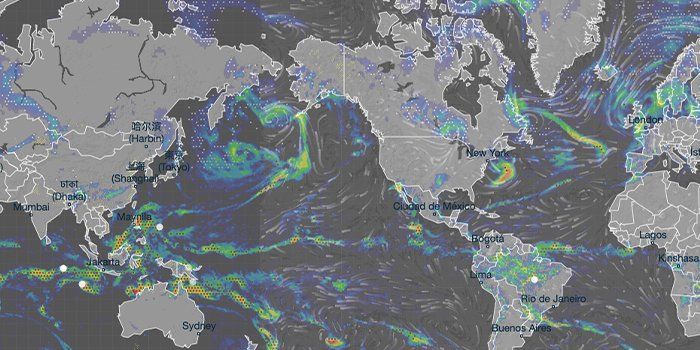Ever wonder about the weather and where rain and snow come from? Or where they go?
Our planet has weather cycles. These short term changes in the atmosphere cause clouds to form and rain to fall. Climate is over long periods of time. Climate averages are usually 30 years of data for a particular region. We will talk about climate in a later edition so stay tuned!
Bear and Rabbit: How Winter Came to Be
Told by Jerry Kanim Illustrated by Nik-Ko-Te St.Onge
Check Out Our Zine!
Learn the water cycle and do some fun activities!
Evaporation is the process where bodies of water like oceans, lakes and rivers are warmed by the sun causing tiny water droplets, called water vapor, to break away and rise into the atmosphere where they cool and join back together forming clouds.
Check out this short video to see how rain is formed.
Video: How Rain is Formed
This is not the only way that water droplets find their way into the atmosphere. Trees and plants give off water vapor too in a process called transpiration.
Video: Transpiration in Plants
Transpiration happens from all plants but it is very noticeably seen in tropical or temperate rainforests where vegetation is dense. Low clouds and fog can seem to spring up from nowhere in places like the tropical Amazon Rainforest.
Video: How Forests Create Rain
Published by Jimi Sol
Video: Above the Amazon Rainforest
Published by National Geographic
We even have temperate rainforests right here in Washington State!
Precipitation happens when the condensing vapor in the atmosphere, that formed the clouds earlier, becomes too heavy to stay in the atmosphere. It then falls back to earth in the form of rain, snow and even hail.
Check out these videos to get see how much wind and rain different areas of the globe get.
Experiment/Video: Snow Storm in a Jar
Want to find out how much rain falls at your home? You can make a simple rain gauge like the one in the video below. After you've made a rain gauge, you can measure the rain that falls every day for one month.
Experiment/Video: How to Make a Rain Gauge
It rains a whopping 41 inches in Tacoma each year but what about other places in the world? Hover over the rectangles to find out.
How Much Does it Rain in New York City Each Year?
47 Inches
How Much Does it Rain in Mexico City Each Year?
27.6 Inches
How Much Does it Rain in Tokyo Each Year?
60 Inches
Draw or create a rainy day image and share your picture with us! Here are some examples
Craft/Video: How to Make a Paper Umbrella
Craft/Video: Rain Cloud Scene with Waste Material
Craft/Video: Make a Rain Painting with Crayons
Craft/Video: How to Draw a Simple Rain Cloud
The amount of precipitation can affect tree and plant growth too! Maple syrup is a type of sap and weather changes can affect how the sap flows and tastes.
Video: What is Sap Flow?
Published by ICT International
Video: Warmer Maine Winter Makes Maple Sap Flow
Published by News Center Maine
The water that falls back to earth is all trying to get back down to the lowest point, sea level, through collection. Rivers and streams visibly carry water from really high places eventually to the oceans and lakes. Glaciers and snow pack travel too, but at a much slower rate. There is also a hidden source of water right below our feet. Groundwater is underneath us and also slowly heads to sea level
Where Does the Rain Go?
Experiment/Video: How to Make a Rain Gauge
How Does Water Move?
Video: How to Test the Viscosity of Liquid
Published by Cool Science Experiment Headquarters
Video: Viscosity Demo - Oil and Water
Published by Physics Demos
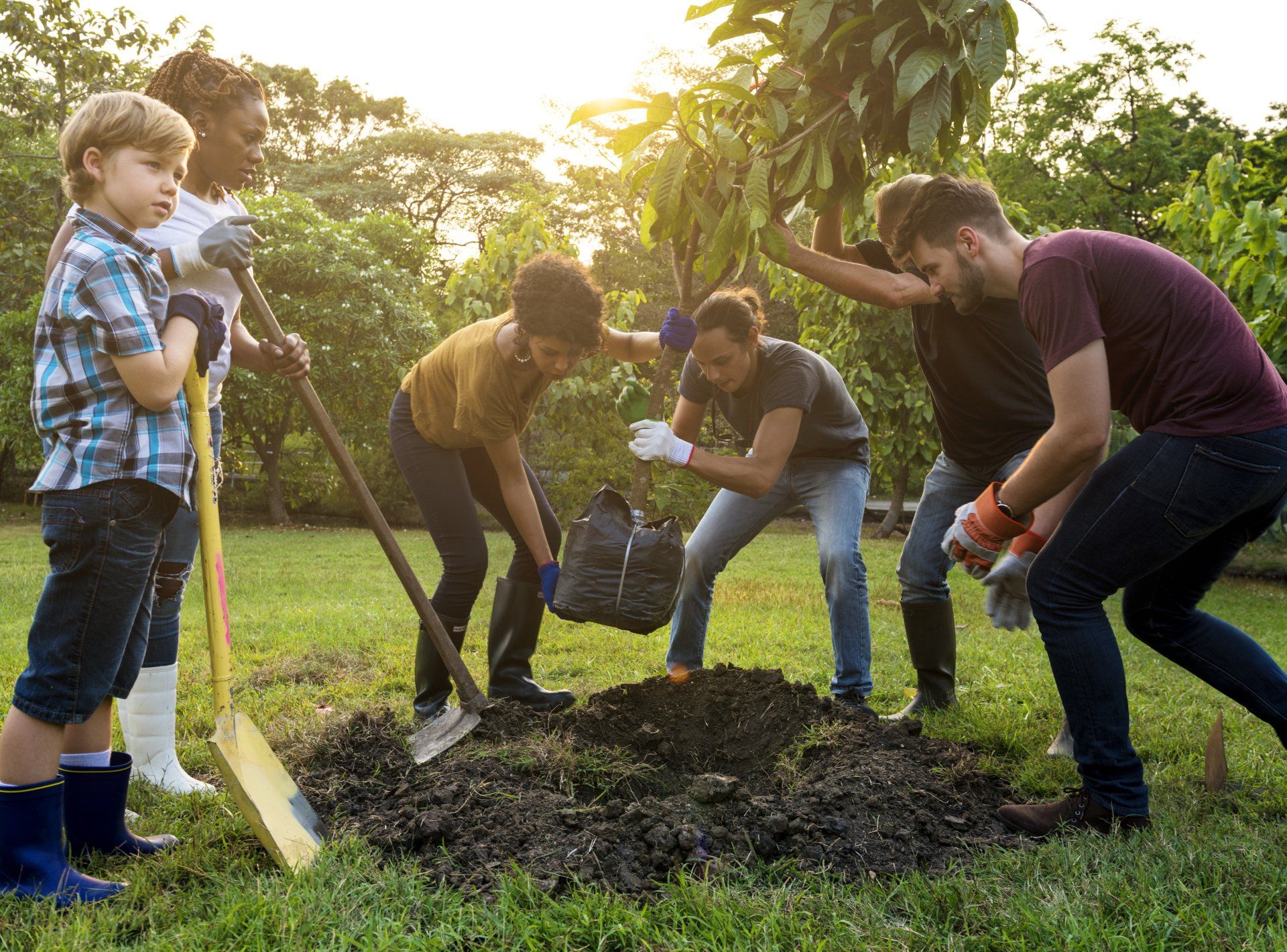
You and your grownups can come plant with us!
The Tacoma Tree Foundation plants rain or shine!



